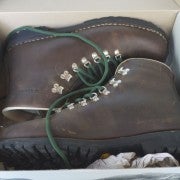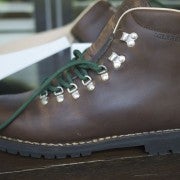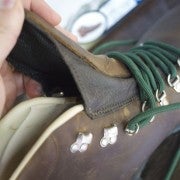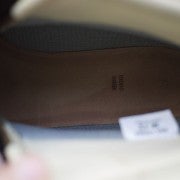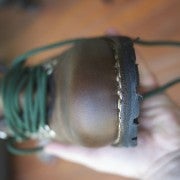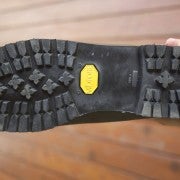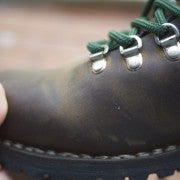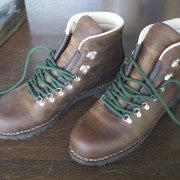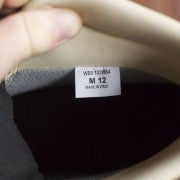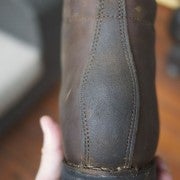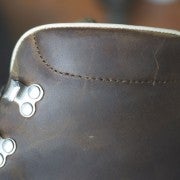Merrell Wilderness Boots Review: I’d Bug Out in These
Jon Stokes 06.15.14
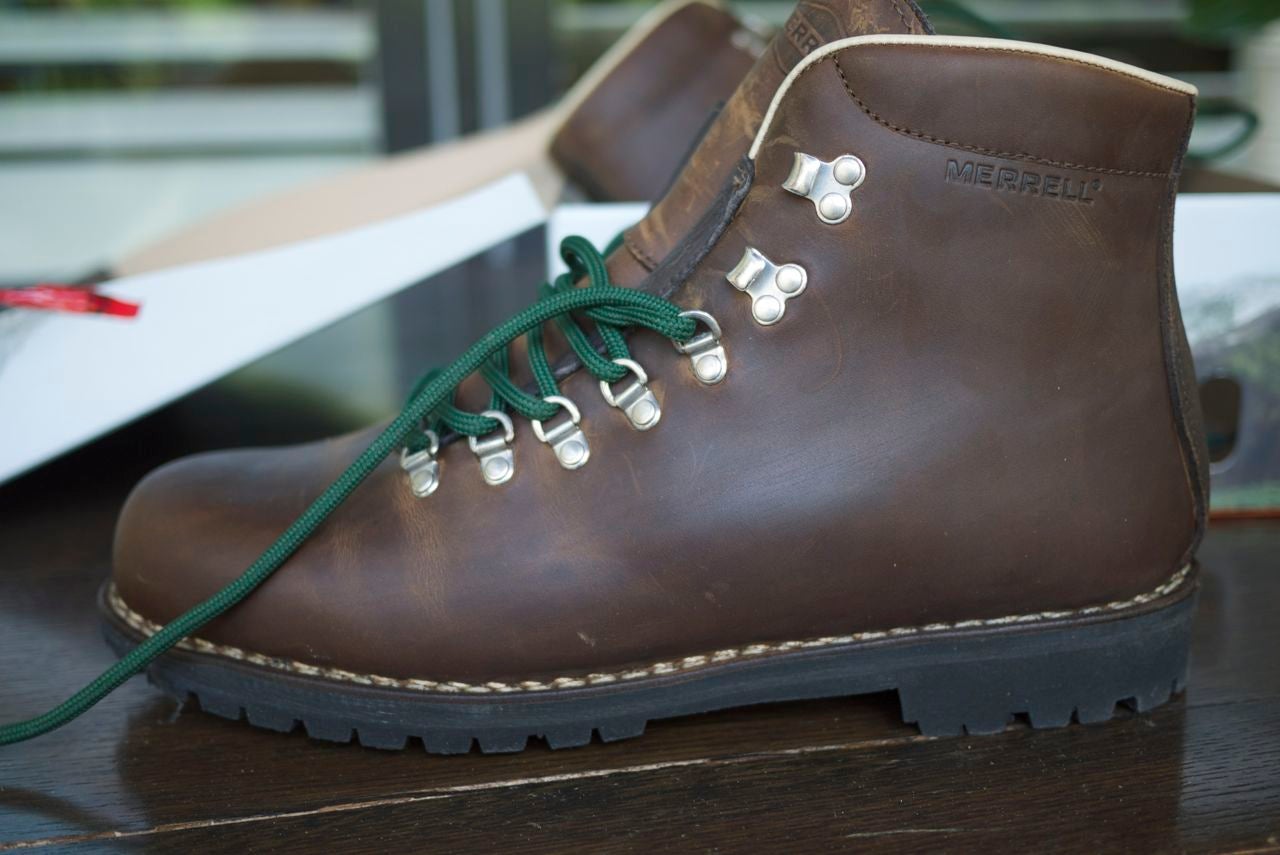
I bought my first pair of Merrell shoes about 15 years ago in a comfort shoe store. I was a poor student with no car, so I walked everywhere, which meant that I prized comfort over fashion. The shoes actually didn’t look that bad and I certainly don’t recall disliking anything about them, but I do know that for whatever reason I moved on from Merrell after that and never really had the urge to go back. I didn’t really know much about the brand, but in the intervening years whenever I’d see the Merrell name I’d think, “This is a company that makes pretty decent comfort shoes, but nothing that I’m excited about.”
So when PlanetShoes.com sent me a pair of Merrell Wilderness Boots to try out, I wasn’t expecting too much. At $300, I figured that they were probably both too cheap to be truly great and more expensive than they should be. When I pulled the boots out of the box, I was stunned.
Now, I own some expensive boots, most of which are handmade, and my wife even has some customs, so I know when I’m holding a top-notch pair of boots in my hands. As I handled the Merrells, I was in shock. The craftsmanship, the fit and finish, the quality of the leather and stitching, the Vibram sole, the leather insole, the little “Made in Italy” tag inside the shoe–the whole package was out-freaking-standing. I could not believe that these boots were only $300. I also could not believe that these were from the same company that made those ho-hum comfort shoes I had bought 15 years ago. Some Googling clued me in to the fact that I should have learned more about Merrell before writing them off.
It turns out these Wilderness Boots from Merrell’s Origins line are a very famous model that Merrell made decades ago and that had acquired a cult following like Limmers or White’s. This was before the company stopped making them, about the same time I purchased my first pair of Merrells. The original line was made in Italy, and had a reputation as a top-notch hiking boot that you could wear for thirty years straight–and then replace the sole and wear for another thirty.
Indeed, if you do some searches for this line of boots, you’ll find posts from folks who’ve been mountaineering in the same pair for decades. You’ll also find rave reviews for the revived line, with most reviewers claiming that the new boots are made to the same standards as their predecessors.
I’ve since spent some time in these boots, knocking around a town in the summer heat and hitting a few trails and a creek near the house, and I can testify that so far I’m still as excited about them as when I pulled them out of the box. You feel like you can do anything in these boots, and like they’ll take any amount of abuse. They’re extremely comfortable, with plenty of support, and you can tackle any type of terrain with them. They’re also true to size, and I luckily have had no issues with blisters or hot spots.
There are only two real downsides to these boots so far, both of which are going to be true of any leather boot with old-school styling like this. First, the soles start out a bit stiff and will require some breaking in. I’ve not fully broken mine in yet, but they’re getting there. I expect them to feel like thick leather slippers before long. With a natural boot like this, it will take some time to conform to your foot and for the leather to soften up a bit.
The second issue is that the boots aren’t completely waterproof. You can immerse your foot briefly and be fine, but if you’re planning on hiking through a bunch of water or trudging through cold, snowy slush, you’re likely to get a bit of seepage. That said, I just treated the boots with some Obenauf’s, and I plan on taking them back out again and getting them wet just to see if it eliminates seepage in scenarios where my whole foot is immersed for a decent period of time.
I’ve also seen some complaints online about hiking with these in super wet climates (not many, but a few), so people who will be spending most of their time in extremely wet terrain may be better served by something like Muck Boots, which are made for swampy type situations and not so much for mountaineering or hiking.
When all is said and done, these are undoubtedly the best leather, re-sole-able hiking boots that you can buy for $300. To upgrade from these, assuming that that’s even possible, you’d have to spend well north of $400. There are also some less attractive synthetic options in the $300 range that might be better suited for people with specialized needs like extremely low weight, completely watertight, heavy insulation, or other features. But if you’re looking for do-it-all, armageddon-proof leather boots for camping, hiking, hunting, or long-term bugging out, then the only way to do better than these would involve a 33% price increase, at a minimum.
I can compare the Merrell Wilderness boots to my Filson uninsulated Uplanders, which retail for around $375. I’ve tried and tried with the Filsons, but they just aren’t good enough, despite the price tag and the Filson name. My feet hurt after an hour in them, especially my Achilles, and I have no idea why. I’ve taken them on multiple camping trips, once to the Pacific Northwest for two weeks in the bush, and I end up limping most of the time. So now I’m just going to throw them out and pick up a pair of the Merrell’s in black for my own personal use. Good riddance to the Filson Uplanders, and hello to Merrell’s Wilderness Boots. I give these bad boys five very well-deserved stars.
